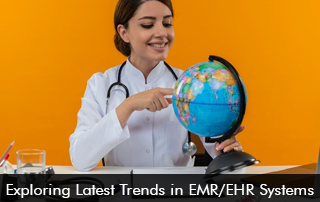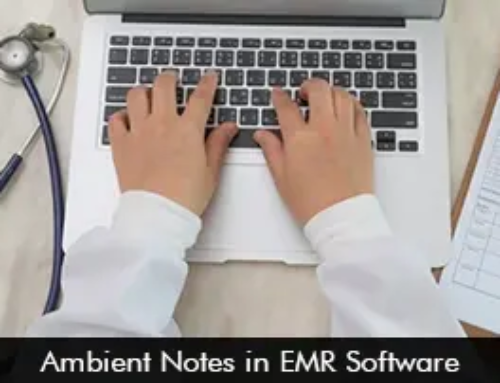The use of Electronic Health Records (EHR) and Electronic Medical Records (EMR) systems has revolutionized the management and access of medical data in the quick-paced world of healthcare. These technologies, which offer several advantages like better patient care, faster workflows, and increased data security, have evolved into indispensable tools for healthcare providers. It is important to learn about the most recent developments influencing the EMR/EHR system landscape as technology advances.
Interoperability and Integration:
- The drive for interoperability and seamless connection with other healthcare IT systems is one of the most important themes in EMR/EHR systems.
- Systems that can connect with one other and allow patient data to be shared across platforms are in greater demand from healthcare organizations.
- Better care coordination, less duplicate data entry, and increased overall efficiency are all made possible by this interoperability.
Cloud-Based Solutions:
- EMR/EHR systems are not an exception to the way cloud computing has completely changed how data is accessed and stored.
- Cloud-based solutions enable accessibility, scalability, and flexibility, enabling medical professionals to safely access patient records from any location with an internet connection.
- Furthermore, disaster recovery procedures are frequently integrated into cloud-based systems, guaranteeing data integrity and uninterrupted medical services in the case of a system malfunction or natural disaster.
Artificial Intelligence and Machine Learning:
- Another developing trend is the incorporation of machine learning techniques and artificial intelligence (AI) into EMR/EHR systems.
- These tools have the capacity to swiftly evaluate massive patient data sets, spot trends, and produce insights that can aid in clinical decision-making.
- Healthcare practitioners may give their patients with more accurate and proactive care by utilizing AI-powered features like risk stratification, predictive analytics, and personalized treatment suggestions.
Patient Engagement Tools:
- Patient involvement is becoming more widely acknowledged as an essential part of providing healthcare.
- Patient portals, smartphone apps, and other interactive technologies are being added to EMR/EHR systems to encourage people to be more proactive in their own health care.
- Better health outcomes can be achieved by giving patients access to their medical records, booking appointments, interacting with their healthcare providers, and taking part in shared decision-making through the use of these tools.
Telehealth Integration:
- Healthcare companies were prompted to include telehealth features into their EMR/EHR systems as a result of the COVID-19 pandemic, which hastened the adoption of telehealth services.
- By facilitating easy virtual consultations, remote monitoring, and telemedicine visits, these integrated systems reduce the danger of infectious disease exposure while giving patients quick access to care.
Enhanced Data Security:
- Healthcare data is becoming more and more digital, therefore it’s critical to ensure data security and compliance with laws like HIPAA.
- Sophisticated EMR/EHR systems include strong security features like audit trails, multi-factor authentication, and encryption to shield private patient data from intrusions or breaches.
Personalization and Customization:
- When it comes to EMR/EHR systems, healthcare practitioners have different demands and preferences.
- Modern systems provide more customization and customization choices to meet these diverse needs.
- To improve user happiness and uptake, providers can tailor the system’s interface, templates, and processes to fit their own practice settings and procedures.
Ultimately, the most recent developments in EMR/EHR systems demonstrate a persistent emphasis on patient involvement, telehealth integration, cloud-based solutions, AI-driven insights, interoperability, data protection, and customization. Accepting these trends will enable healthcare organizations to use technology to enhance clinical workflows, improve patient care, and spur innovation in the always changing field of healthcare delivery.








